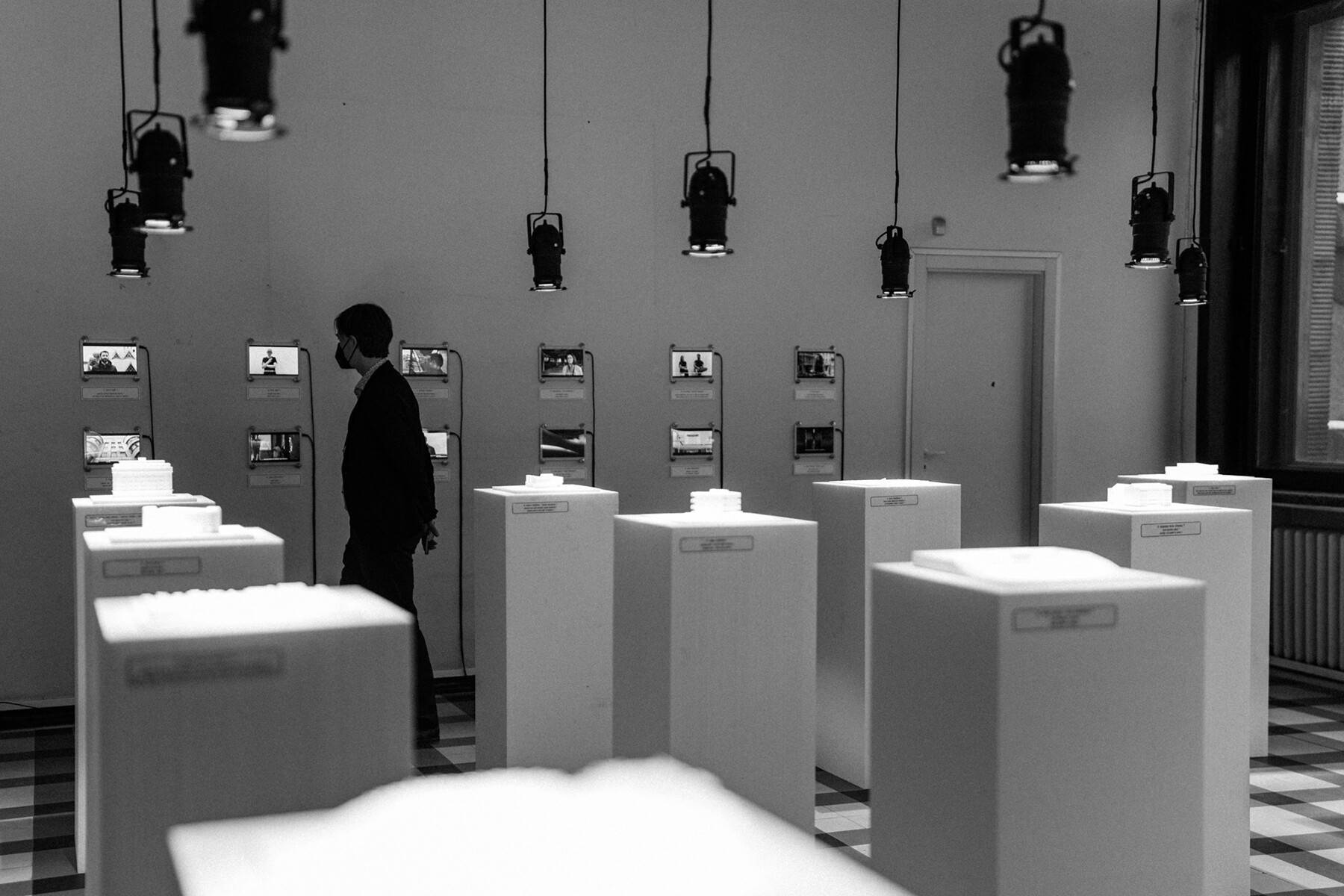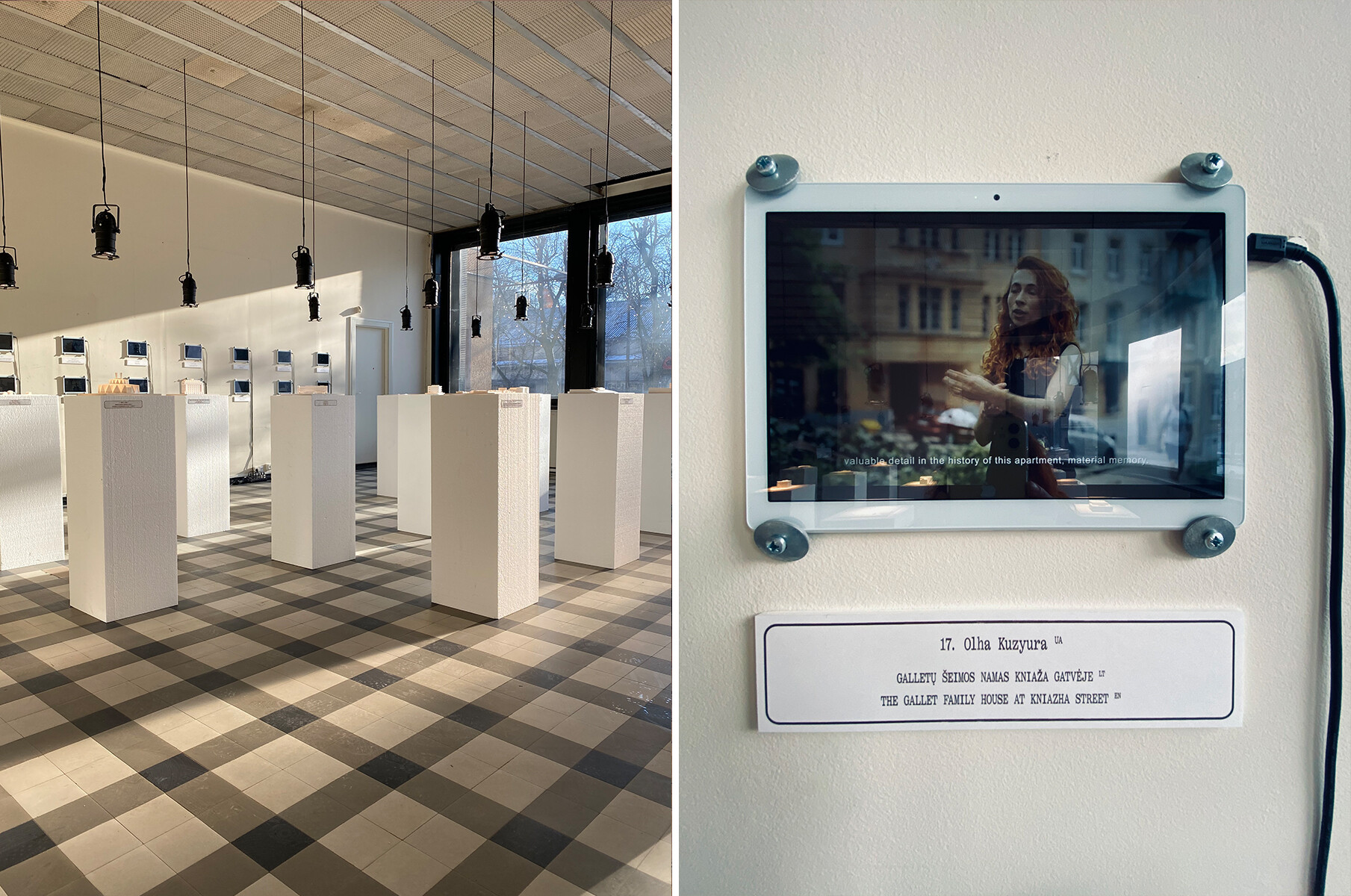2021 - 2022
Installation
Materials: paper / blind print, nails
The installation was created in Lviv in 2021 as a part of the “Modernism for the future 360/365”.
“Modernism for the future 360/365” is an international project on rethinking the modernist heritage through art, which in 2020-2022 united four European cities with a series of art residencies and thematic events: Lviv, Kaunas, Kortrijk, Brno. “MoFu” partner organizations: Kaunas 2022 (Lithuania), Intercommunale Liedal (Belgium), Vizard (Czech Republic) and the Institute of culture strategy (Lviv).
The head of the project in Lviv: Yaryna Korotkevych.
The project was implemented with the support of the Creative Europe program of the European Union.
Project in details:
book online
The main installation of paper prints was created in sizes 2.5 x 2.5 m and 2.5 x 5 m.
Photo: Nazar Parkhomyk

Shared memory / Act of remembrance is the result of research into the history of the residence in the Gallets’ house on the Knyazha 16 st. in Lviv, which took place within the framework of the international project “Modernism for the Future”. The building has preserved traces of the authentic life of the original owners – a Jewish family that perished in the Ghetto.
The work highlights the dialogue of details: dictated by the stylistics of the time, the daily visual routine of the owners. Based on the assumptions of other residents of the city's modernist buildings, lost motifs were recreated, things from the apartment at Knyazha 16, which were stolen and destroyed, traces of its subsequent owners were supplemented. The work is an appeal to the ancient art of reiselle: not in the literal reproduction of the paper-cutting technique, but in the meaningful selection of the composition, which reveals the most important symbols physically intertwined with each other. Paper itself is not only a document certifying birth and death. In Jewish culture, works of paper were important attributes and amulets. The paper composition reproduces the motif of a traditional panel – Mizrah, in Hebrew "east", traditionally pointed in the direction of Jerusalem. The placement of the installation in the apartment was not accidental: it is here that the passage to another room and the terrace – the lost part of the apartment – is walled up. So our metaphorical homecoming prayer is directed in that way.
Common knowledge filled the gaps of personal history, and personal knowledge shed light on collective experience. This project is so close to me, because this method is built from my autobiographical history. I create a space for the realization of a dialogue of details, elements of visual routine – sources of basic symbols that accompany a person throughout life and become decisive in the process of self-identification. I try to be attentive to the details of everyday life, the surfaces on which the gaze slides without focusing, the things we carelessly touch. Consciousness wanders in this material background and is formed by it.
This search is not necessarily aimed at a result, but rather at acquiring the skill of conscious living. My family bears the wounds of the Holodomor, relocations as part of the Wisła operation, great losses during the World War II, forced labor in camps, repressions. It was formed in a space where there was a lack of a safe place to experience and discuss the past. Much of the information about the roots has been lost. I complete the immeasurable experience of my relatives through other stories in artistic images thanks to participatory practices. I try to create a safe space for going through a potentially traumatic experience in my works. Today I want to talk about it, because now we are once again deciding what to do with the traces of war and genocide. We, once united by a silent agreement to hide and erase traces of pain and loss, are learning to speak.
Human existence, which is spatially and functionally in contact with the world, leaves its mark in all kinds of materials. The physical disappearance of the owner only represents his or her former connection with the material world. The spatial connection, the integrative physical dimension gathers around itself the unity of paths and relationships, birth and death.
The story of the tenement house and its owners is the story of millions. But only in this apartment, unlike in others, material preservation emphasizes the absence, even manifests it too much. Absence is such a concentrated substance here that it occupies its own space. Unrealized life energy freezes in the midst of objects around the new inhabitants. They had a highly respectful attitude towards forced inheritance. A person is prone to bodily, physical occupation of space, displacement, but here the act of erasing the past has stopped. This preserved history allows us to better understand our present.




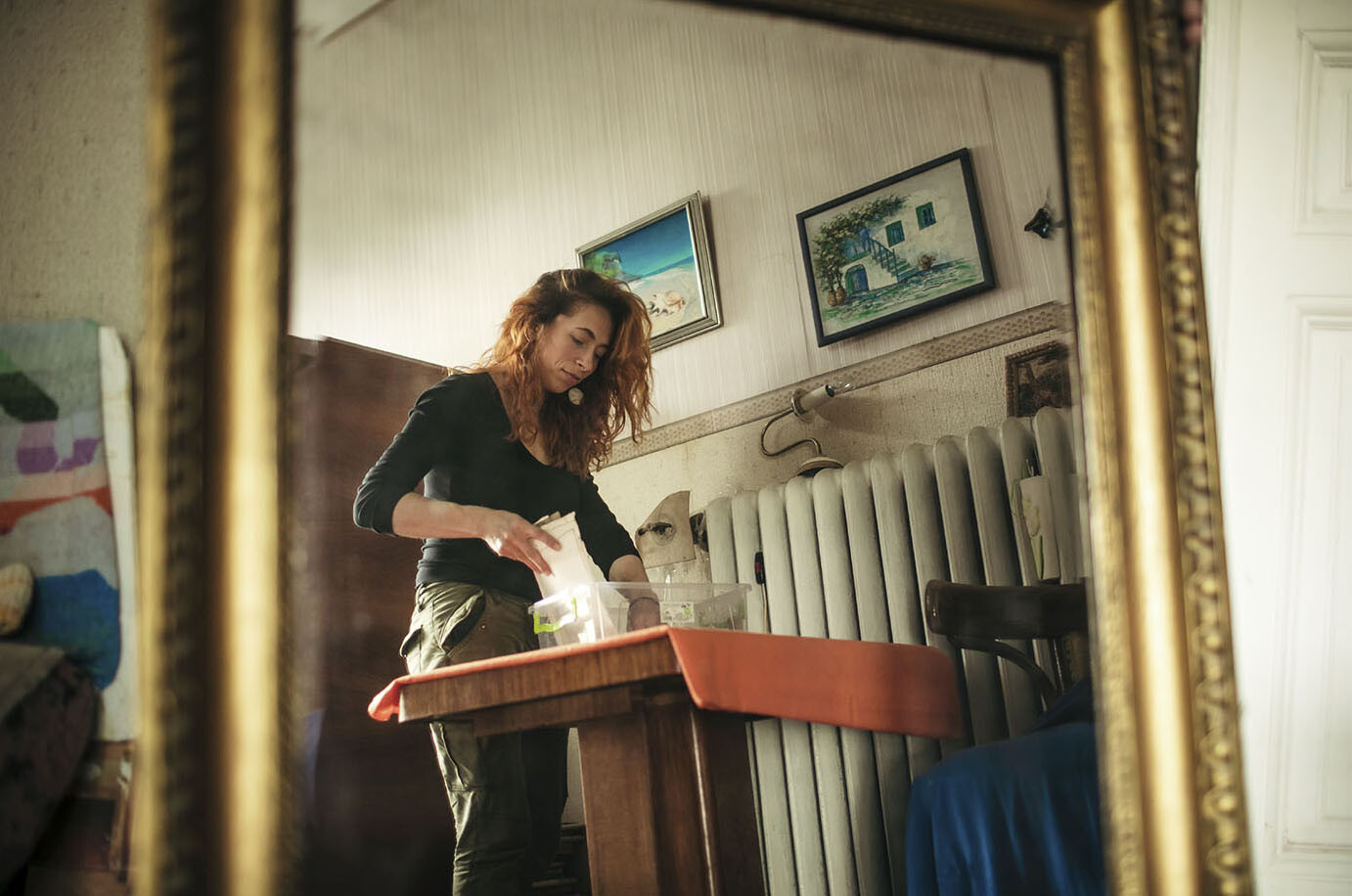















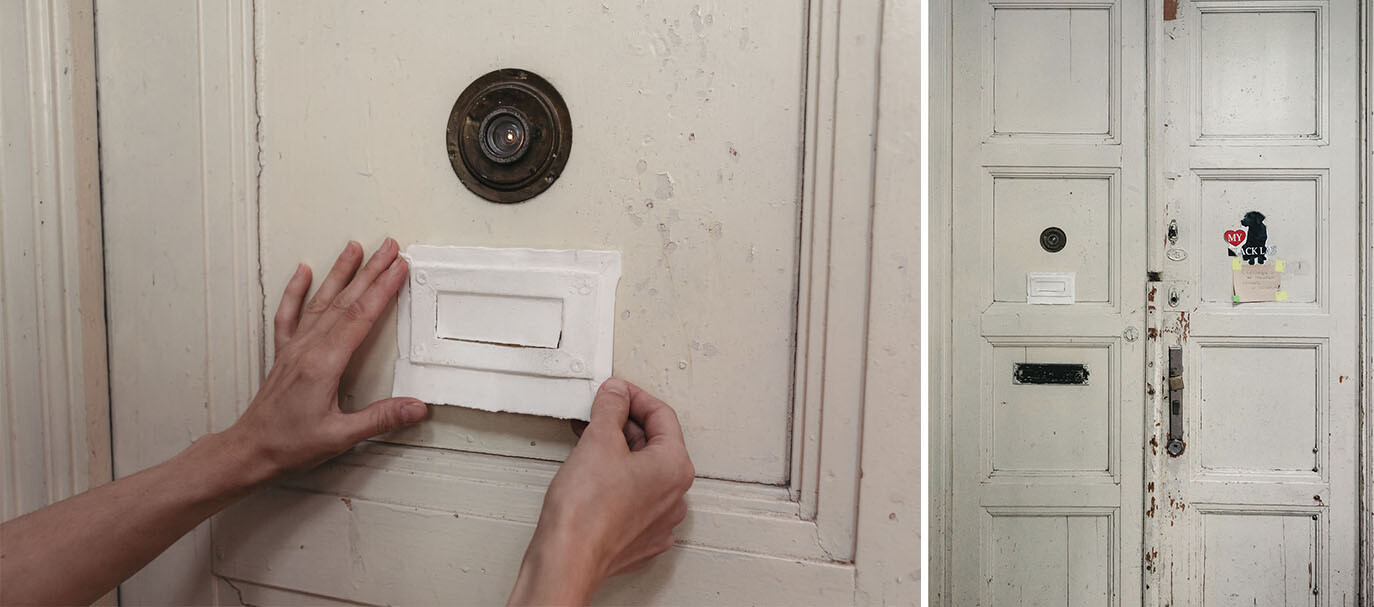
On June 2021, the results of the local residency “Modernism for the Future 360/365” were presented in the Gallets’ tenement. For the presentation of the project, we chose the format of an apartment exhibition. The context of the place is extremely important here. Due to the current quarantine restrictions for the public presentation, access to only one room was provided. Only small groups could enter. We held several public meetings, with tours round the building during one day. We created an album that included documentation in photos and texts to delve into the context and highlight the work process. Later it was supplemented. The presentation of the project at Knyazha 16, in particular the installation, was a continuation of the discussion that developed during the residency itself while working with the residents of Lviv's modernist buildings. Lively discussion of the ar tistic and research component of the residency created the feeling of the beginning of the new phase of the project's life, rather than its completion.





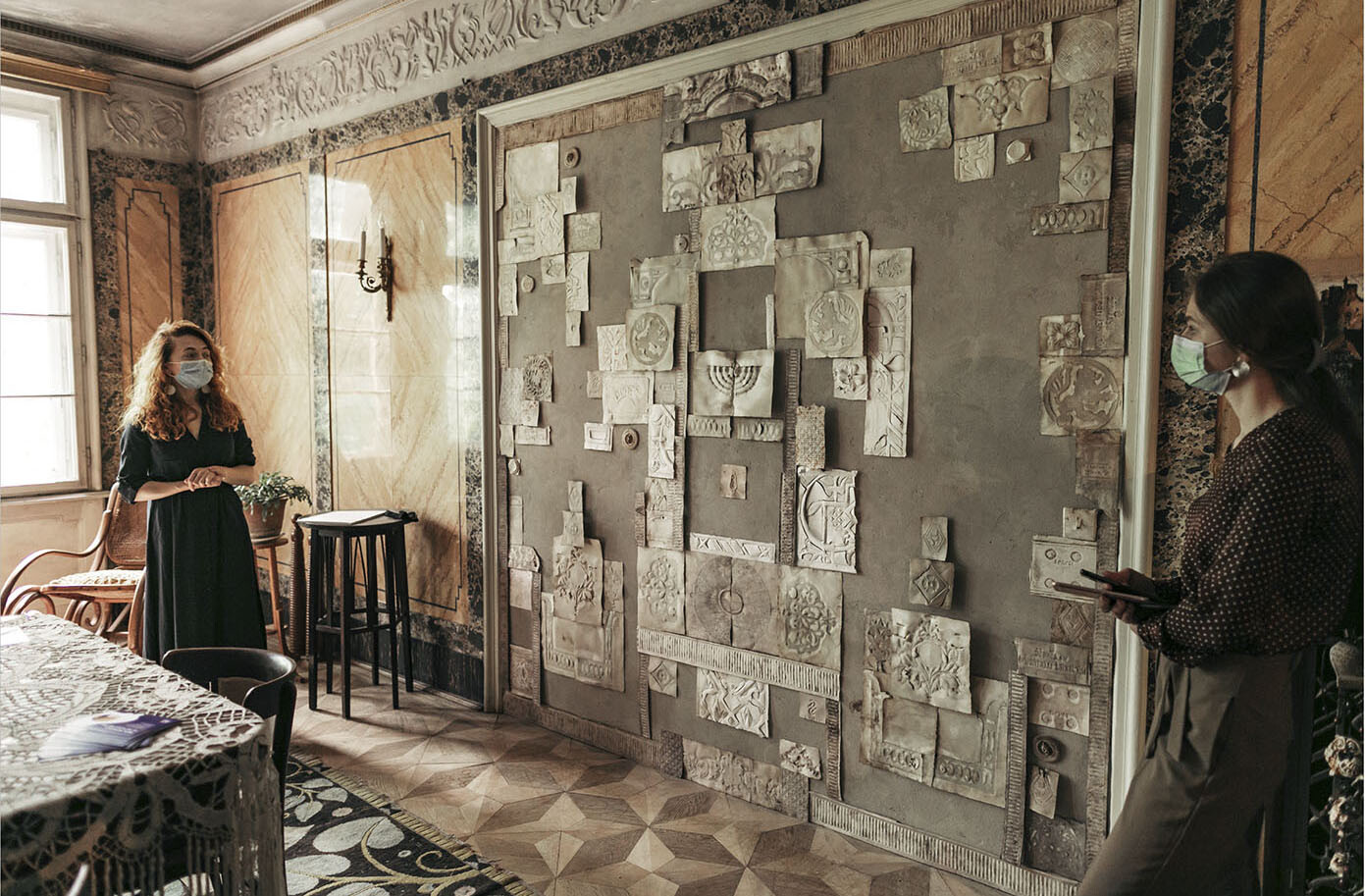

The project involved 19 people aged 4 to 89 years.
Special thanks to Ms. Clara and Mr. Thaddeus for the warm welcome and support of the project.

Prior to the presentation of the project created within the framework of the international program Modernism for the Future 360/365, a copy of the album was published, which covered the work process in detail. The cover was made by me by hand in a single copy in the technique of blind printing linocut. The relief reflects the location of the house of the Gallets from the project of Tadeusz Wrubel. The album was presented at Knyazha 16. I am preparing an extended English version for the exhibition in Kaunas, which will include more detailed interviews and materials from the exposition in Lviv.

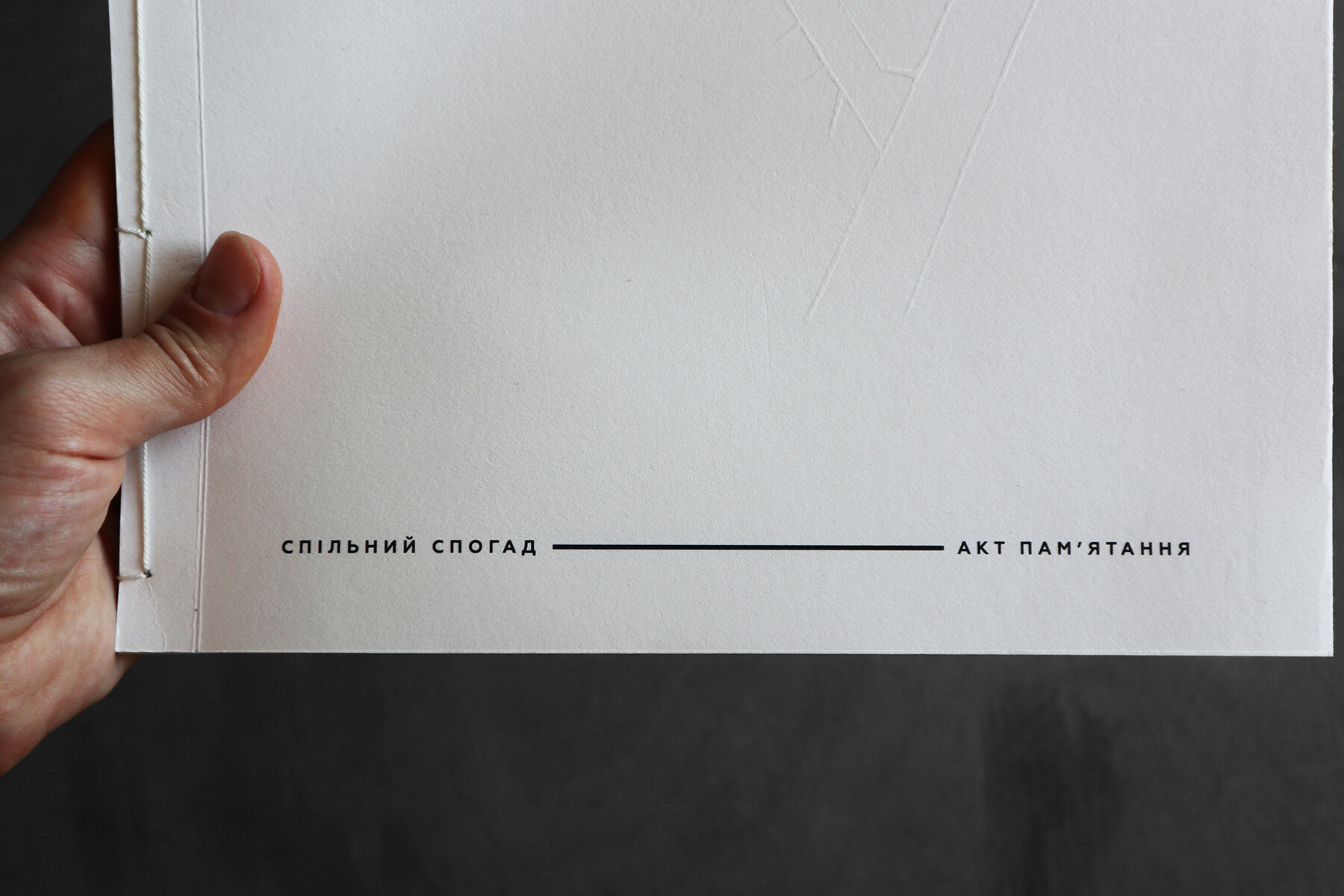
Presentation of the installation "Shared memory. Act of Remembrance" as par t of the international project "Modernism for the Future 360/365" took place in January 2022. All realized works of the involved artists were presented in the building of the former central post office in Kaunas (Lithuania). During 2021, "MoFu" hosted 14 ar t residencies and thematic events in the project's par tner cities, namely: in Kortrijk, Lviv, Brno and Kaunas. The joint exhibition of all participants of international residencies was held as part of the presentation of the cultural program "Kaunas – European Capital of Culture 2022".


